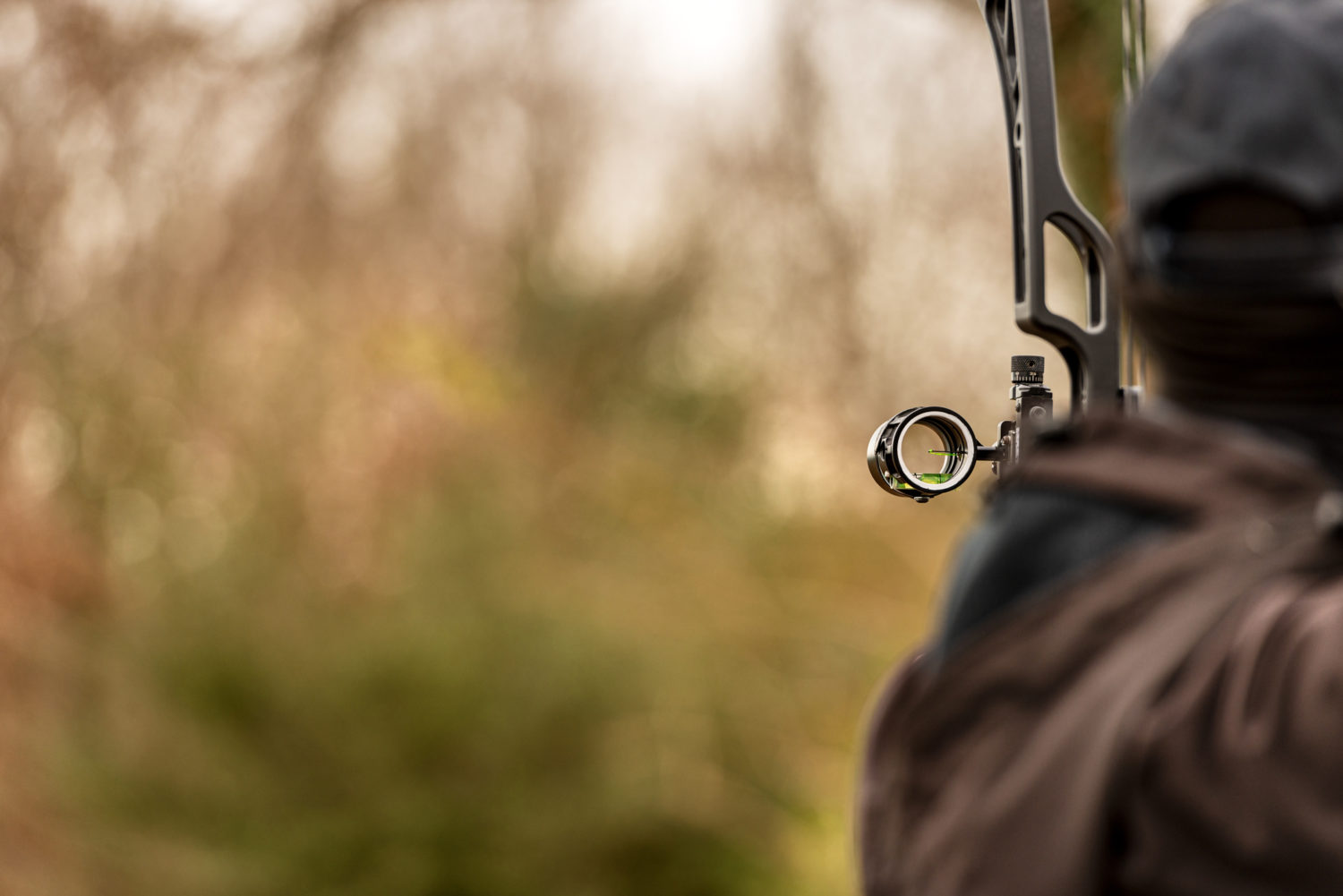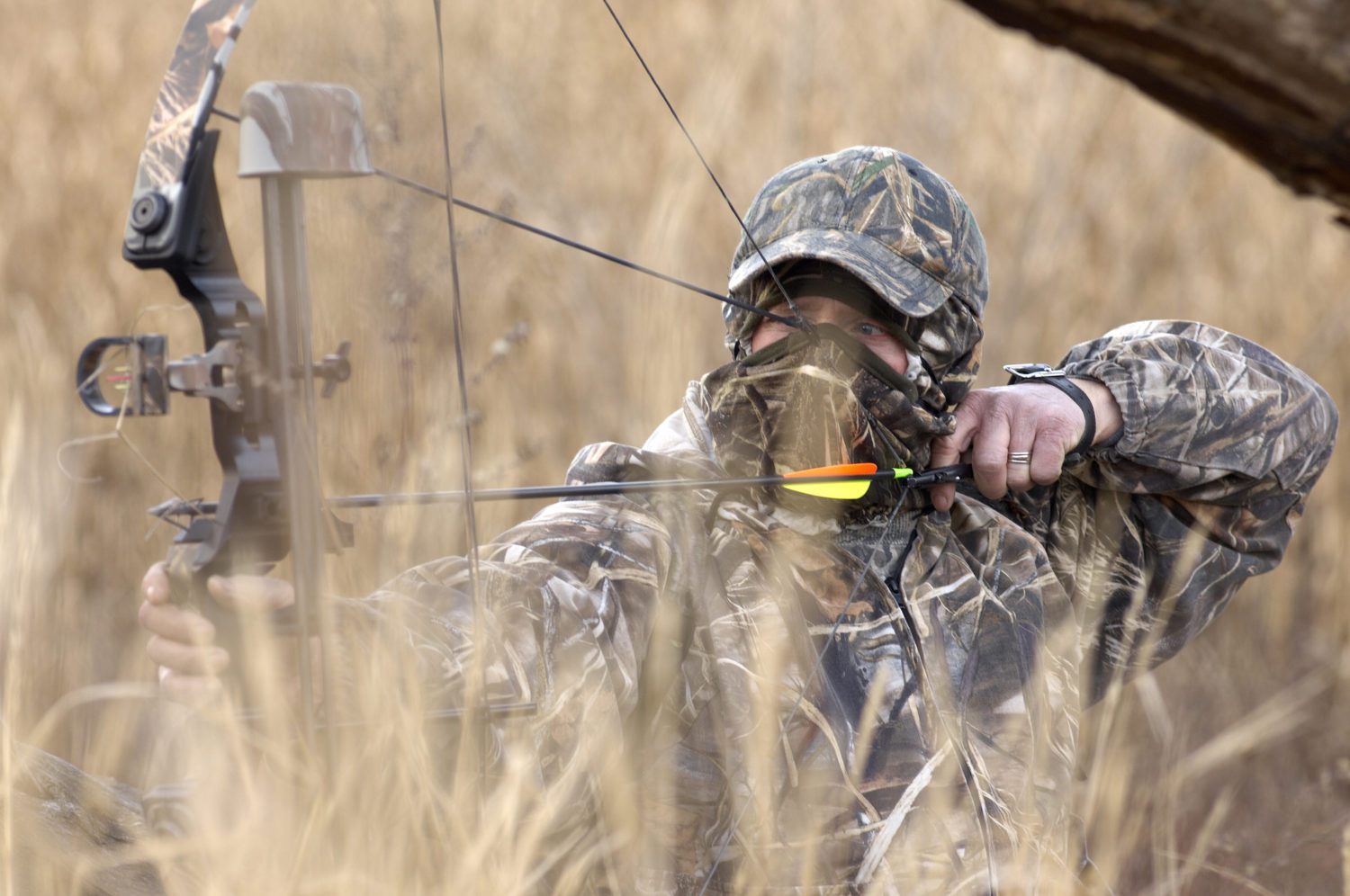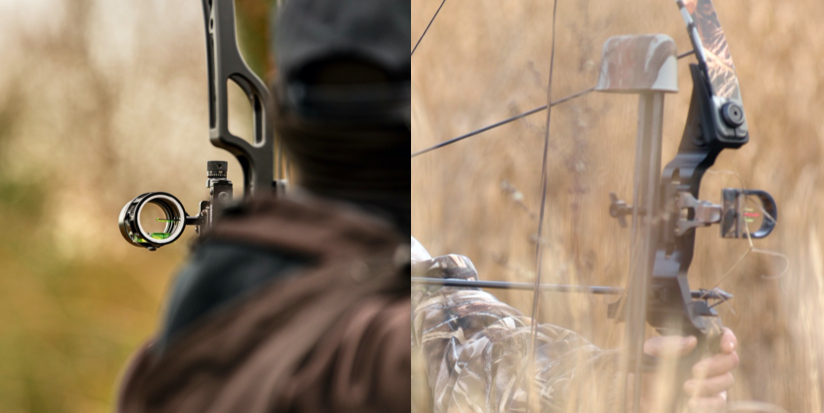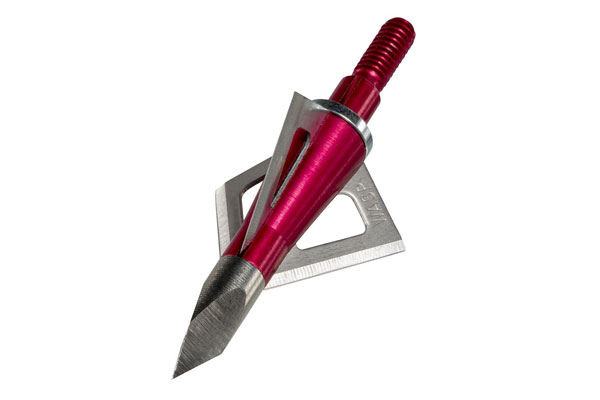Single-Pin vs. Multi-Pin Sights – Which is Better?
There is certainly no shortage of heated debates within the bowhunting community. Fixed vs. mechanical blades. 100 vs. 150 grain broadheads. Heck, you could even argue the merits of a crossbow over a compound if you wanted. But one that keeps coming up — with experts and amateurs alike on both sides of the fence — is if it’s better to use a single-pin or multi-pin sight.
Whether you’re buying your first bow or rethinking your current setup, hunting season is right around the corner, so you’ll need to make a choice. Unfortunately, that choice isn’t so easy, so we’ll run you through the pros and cons of each one so you can be confident you’re taking aim with the best sight for you.
Single-pin sights
Single-pin sights, as the name suggests, contain just one vertical or horizontal pin and bubble level in the sight housing—and nothing else. No clutter. No confusion on what to focus on. Just the single pin. They operate with a simple track slider, allowing you to adjust the pin to the exact yardage you need, taking the guesswork out of each shot.

Pros:
- Clearer sight picture
- Able to adjust to exact yardage
- Faster target acquisition
Most hunters who swear by single-pin sights would argue simpler is better. Having less in the way of your target — especially one that is partially obstructed to begin with — means you’ll be able to home in on it that much quicker. With the ability to precisely set your yardage, each of your shots will be more accurate and deadly as well.
Cons:
- Requires adjustment for each shot
- Slower time to full draw
- Adds extra movement
Single-pin sights have their fair share of—ahem—drawbacks as well. While great for stationary targets, single-pin bows are not ideal to track animals on the move. By the time a new distance is set, your prize whitetail may already be 5 or 10 yards further out and you missed your golden opportunity. And if the animal is facing your direction, the slight movement needed to adjust your slider could be all it takes to send them running for the hills.
Multi-pin sights
Multi-pin sights are by far the most common method used by bowhunters today. They are quite customizable, allowing hunters to use anywhere from 3 to 9 pins in their setup. Typically, the pins are set to represent 10-yard increments, such as 20, 30, 40, 50 yards, etc. Knowing the range of each pin means you won’t need to make any physical adjustments in the field, although it does require more mental calculations and focus to fire accurately.

Pros:
- Quickly adapt to moving targets
- Requires less movement
- Ideal for low light situations
Say you’re tracking a buck and finally spot it at about 30 yards out. You draw back and take aim but before you can release, something spooks the thing and it bounds away 20 yards before coming to a stop. With a single pin, you would need to let down and readjust for the new shot, but with a multi-pin you would simply aim with a different pin and make the hit.
Another thing that hunters often fail to take into consideration is visibility. Most single-pin sliders aren’t illuminated, which makes adjusting your yardage rather difficult in the low light of a pre-dawn or post-dusk hunt.
Cons:
- More obstructed sight picture
- Possible pin confusion
- Requires pin gapping guesswork
You might not think those tiny pins are obstructing very much of your view, but if you’re using a 5-7 pin setup, you’re actually missing out on as much as 40% of your sight picture. It’s also far too common for a hunter to focus in on the wrong pin and send an arrow sailing. While you may not make this kind of mistake at the range, adrenaline has a nasty habit of making even the most experienced bowhunters look like a fool from time to time.
The other major disadvantage of using a multi-pin sight is having to rely on pin gapping. For those who don’t know, pin gapping is when you aim either above or below a pin in order to hit a target that is somewhere in between your set distances. For example, if a deer is standing 35 yards out, you would aim halfway between your 30 and 40-yard pins. The obvious difficulty with this is making those split-second calculations and training your eye to focus on a spot other than the fiber optic tip of a pin.
So, which one is better?
Single-pin and multi-pin sights both have their fair share of advantages and disadvantages. Ultimately, choosing between the two will come down to your preference, arrow speed, and hunting style.
If you typically hunt in an elevated tree stand or from the cover of some dense brush, you’ll most likely prefer a single-pin setup. When you already know the exact distance to your close quarter kill zones, you can have everything dialed in and ready to fire at a moment’s notice.
If you’re more of an open country spot and stalk bowhunter, chances are you’ll lean more towards a multi-pin sight. Having the ability to rapidly adjust yardage on the fly for more flighty game is something you won’t want to live without.
Dial in your preferred sights with Wasp
Are you still having trouble deciding for yourself? Get out to the range (or make your own) and see which one you’re more comfortable and accurate with! When you do, Wasp’s field points make for the perfect target practice tips. Then when you’re ready for the real thing, make sure you take ‘em down with the most lethal broadheads on the market.
View All Posts

